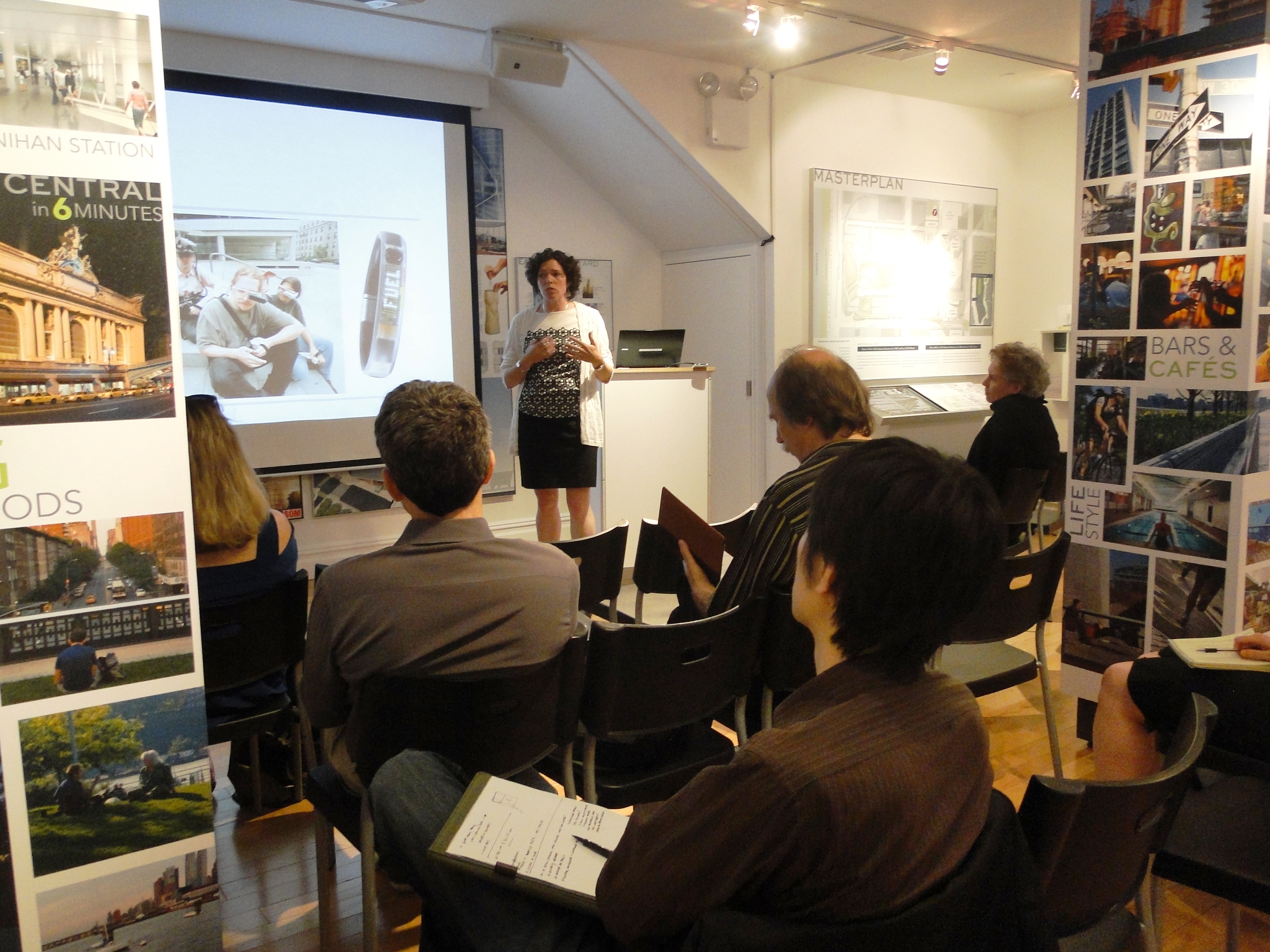by: Matt Shoor AIA LEED AP
Telecommuting to a meeting while wearing pajamas. Analyzing data on a laptop over breakfast. Online video conferencing between collaborators in distant nations. None of these commonplace business practices would be possible without the maturation of the Internet and the viability of wireless telecommunication networks. The rapid proliferation of such customs has indeed changed the way that businesses operate today. The physical home office has lost its power; it no longer exerts a centripetal pull over employees. Consequently, such patterns of human activity beg fundamental reconsideration of the edifices that we inhabit. What is an office for? And who does it serve?
Melissa Marsh, Assoc. AIA, founding principal of Plastarc, asks these and many other penetrating questions when analyzing the fluctuating real estate needs of corporate, institutional, and educational clients. Marsh, the seventh speaker in the “Leadership in a Changing World” series organized by the AIANY Professional Practice Committee, admonished architects to embrace their potential as agents of change. Designers are already trained to create physical objects that respond to fixed behavior. The logical next step is for the profession to step backward and analyze human activity before arriving at a design solution.
According to Marsh, one way to achieve this goal is for designers to embrace their inner social scientists or environmental psychologists. Usage and occupancy of physical space can be measured, the result of which is a building science that is accountable to owners and users. Research and analysis of space promotes efficiency in the built world, an appealing notion to both bottom-line businesspeople and resource-sensitive environmentalists. Moreover, evidence-based design is already being deployed to develop the morphology of a variety of building types, and data collection has already upended or reinforced assumptions about the use and functionality of our workplaces, schools, and hospitals.
Social research, however, is only one of multiple approaches that the architect can use when designing for change. Marsh touched on a host of other strategies, including user experience design, co-design, fail-fast facilities management, finding new ways of listening, and persuading leadership to embrace change. In order for these methods to be effective, clients would have to engage in serious self-reflection regarding their organizations’ past, present, and future.
In addition, Marsh alluded to the fact that designing for change may require the architect to do a great deal of additional work. To start, the designer might need to educate the client regarding the techniques being used in the process. In addition, many of the strategies require the architect to learn about the lexicon, management structure, and daily activity of the client’s organization. In this way, client and architect could literally and figuratively speak the same language so that both have a better understanding of the design process.
Clients can see the writing on the wall: given advances in technology, change is inevitable. As a result, they are requesting help from design professionals to comprehend and plan for change within their companies. Will architects assist them in developing spatial strategies for managing organizational change? The answer will no doubt result in a sea-change within the architectural profession.
Matt Shoor, AIA, NCARB, LEED AP BD+C, is an architect, writer, and educator currently employed by Macrae-Gibson Architects. He is a frequent contributor to e-Oculus, and can be reached at mshoor@gmail.com.
Event: Leading Architecture in a Changing World: The Design of Change: Architecture Meets Organizational Design
Location: Center for Architecture, 05.20.13
Speakers: Melissa Marsh, Assoc. AIA, Founding Principal, Plastarc
Organizers: AIANY Chapter Professional Practice Committee








